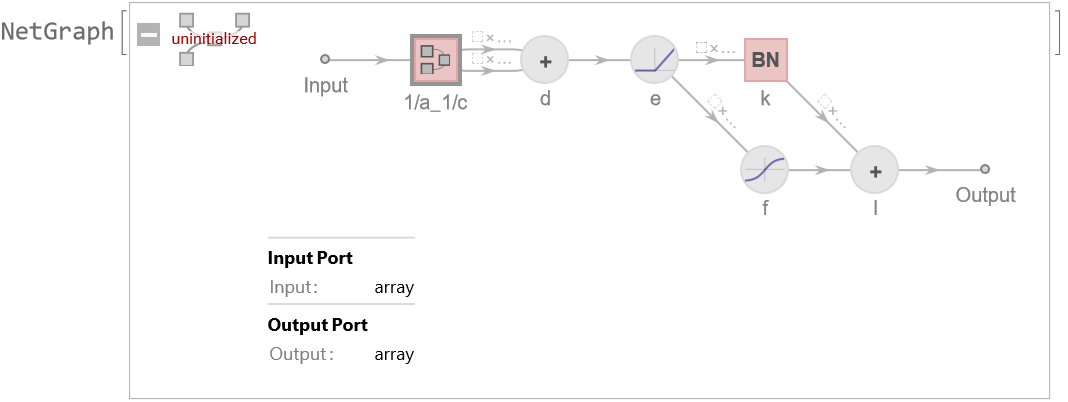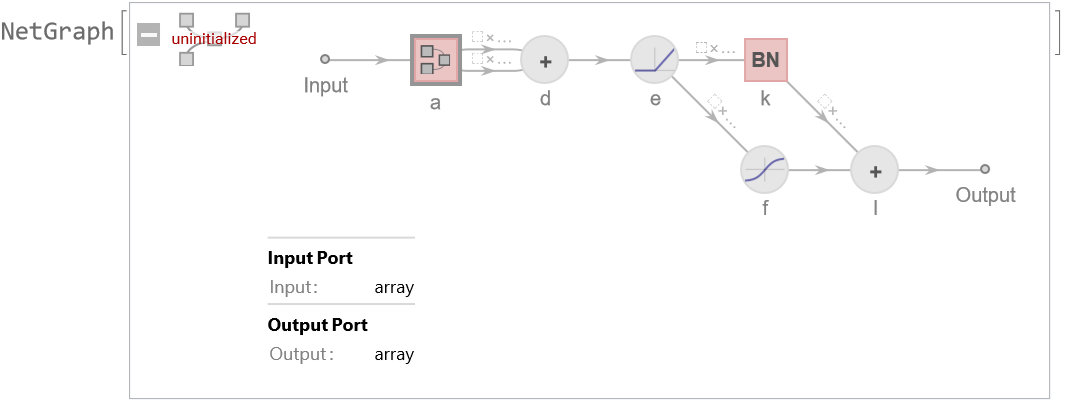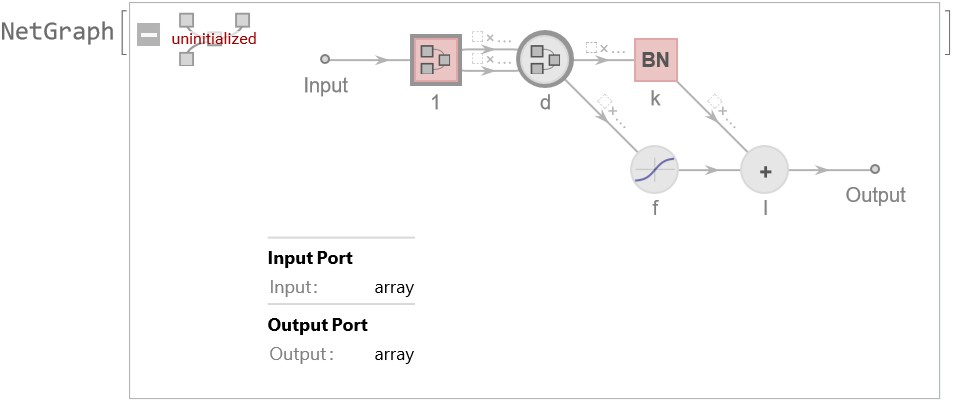Wolfram Function Repository
Instant-use add-on functions for the Wolfram Language
Function Repository Resource:
Contract a subset of vertices in a NetGraph or NetChain into a single vertex
ResourceFunction["NetContract"][net, rule1, rule2 , …] performs all the contractions specified by the rulei…. |
Define a net:
| In[1]:= | ![dummyNet = NetGraph[{"1/a" -> Ramp, "1/b" -> Tanh, "1/c" -> BatchNormalizationLayer[], "d" -> ThreadingLayer[Plus], "e" -> Ramp, "f" -> Tanh, "k" -> BatchNormalizationLayer[], "l" -> ThreadingLayer[Plus]}, {NetPort["Input"] -> "1/a" -> "1/b" -> "1/c", {"1/b", "1/c"} -> "d" -> "e" -> "f", "e" -> "k", {"k", "f"} -> "l"}]](https://www.wolframcloud.com/obj/resourcesystem/images/189/189cff53-a460-459b-95b9-00c87c09308a/49d60b87090be31e.png) |
| Out[1]= |  |
Obtain a new net by contracting everything from the starting to the ending node:
| In[2]:= |
| Out[2]= |  |
Give a new name to the contracted group of vertices:
| In[3]:= |
| Out[3]= |  |
Contract all the vertices after "1/a" and before "1/c":
| In[4]:= |
| Out[4]= |  |
Contract all the vertices which start with the name "1/":
| In[5]:= |
| Out[5]= |  |
Contract all the vertices which match a RegularExpression:
| In[6]:= |
| Out[6]= |  |
Contract all the vertices which match a StringExpression:
| In[7]:= |
| Out[7]= |  |
Contract all the vertices which match a pure function:
| In[8]:= |
| Out[8]= |  |
Contract several sets of vertices:
| In[9]:= |
| Out[9]= |  |
Simplify the net by combining ThreadingLayer and LogisticSigmoid into a single layer:
| In[10]:= | ![net = NetInitialize@NetGraph[
{
"conv" -> ConvolutionLayer[64, {3, 3}],
"bn" -> BatchNormalizationLayer[],
"sigmoid" -> LogisticSigmoid,
"swish" -> ThreadingLayer[Times]
},
{"conv" -> "bn" -> "sigmoid", {"bn", "sigmoid"} -> "swish"},
"Input" -> {3, 100, 100}
]](https://www.wolframcloud.com/obj/resourcesystem/images/189/189cff53-a460-459b-95b9-00c87c09308a/3ab76a7b18ffb860.png) |
| Out[10]= |  |
Create a new net:
| In[11]:= | ![newNet = NetReplacePart[
ResourceFunction["NetContract"][
net, {NetPort["bn", "Output"], "swish"} -> "swish"],
"swish" -> ThreadingLayer[#*LogisticSigmoid[#] &]
]](https://www.wolframcloud.com/obj/resourcesystem/images/189/189cff53-a460-459b-95b9-00c87c09308a/746948197281e0ac.png) |
| Out[11]= |  |
Note that the new net is a bit faster:
| In[12]:= |
| In[13]:= |
| Out[13]= |  |
| In[14]:= |
| Out[14]= |  |
This work is licensed under a Creative Commons Attribution 4.0 International License